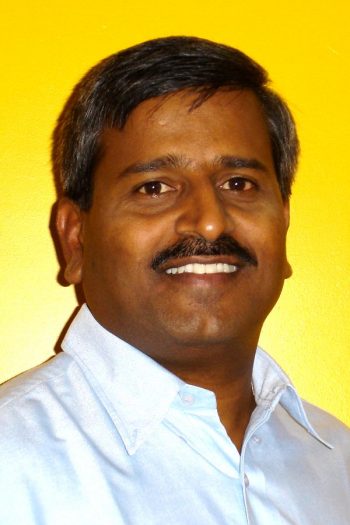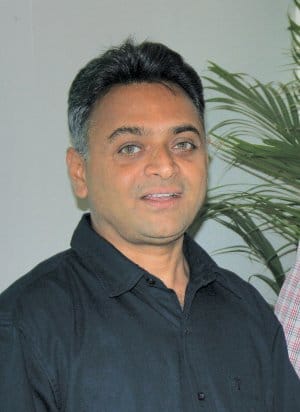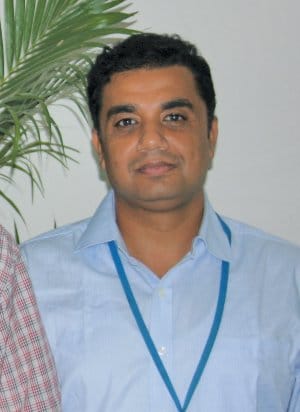

It has been a decade since the Dell India R&D Centre began operations. Could you tell us about the key milestones it has crossed?
Rudramuni B: The Dell India R&D Centre started with a small team of just two or three people, to test Dell Enterprise machines. It has been a decade, and now the team has grown to nearly 700 members. All enterprise operating systems are delivered out of Bengaluru.
The organisation now plays a very important role in key decision-making for all operating system offerings in the enterprise market segment.
For instance, the launch of RHEL 7 is eight quarters away from now, but our team has already started working with Red Hat and Fedora teams on the feature list and product road maps of RHEL 7.
Dell India R&D works on several systems management offerings, including Open Manage, Microsoft SCOM-based management solutions, change management and deployment solutions, enterprise cluster solutions, and solutions to manage virtual infrastructure. These solutions are architected, designed, developed and tested out of Bengaluru. All these offerings are very critical to Dell’s enterprise business.
The Bengaluru centre delivers all online and offline documentation for Dell’s entire product range, including desktops, laptops, netbooks, smartphones, servers, storage, etc. In short, we have complete ownership over the programs we work on. We take a call on matters like deciding the flavour of the operating system to be supported on Dell enterprise-class hardware; the design and development of systems management software; and the development of customised enterprise solutions. This shift in ownership indicates the growth in maturity and stability of the management and technology teams in Bengaluru.
Does the centre also handle consumer products?
RB: No, this centre focuses only on enterprise-related hardware, software, systems management and solutions engineering. The consumer products are handled by our design centre in Austin, Texas.
What are the roles and responsibilities of the Dell India R&D Centre?
RB: This centre has a variety of roles and responsibilities to deliver to various software programs:
- The operating system and hypervisor division is led by Jagadeesh, and they make sure that all Dell enterprise-class hardware runs smoothly with popularly available operating systems and hypervisors.
- The systems management group designs and develops applications and tools to monitor performance, and conduct systems diagnostic tests about the general health of the servers. For example, if a system is about to fail due to fluctuations in temperature caused by fan failure, the systems management software will take appropriate action to forewarn the systems administrator.
Systems management can be either in-band or out-of-band. The Dell India R&D Centre owns the design and is responsible for the development of an in-band product called “OpenManage” that performs all activities including monitoring, deployment and change management.
The Centre also delivers the connections to manage heterogeneous environments. Three years ago, Dell came up with the concept of out-of-band management using iDRAC, which is an enhanced version of embedded Linux ported on the motherboard. It acts as a remote access controller, and has a CPU and memory that is different from the host. - The Dell India R&D Centre is also architecting and designing cutting-edge solutions to effectively manage virtual infrastructures.
- The Centre also works on cluster computing by connecting multiple boxes in various cloud environments. Apart from the above, the Dell India R&D Centre performs various testing activities, which are developed by other global teams at Taipei or Austin.
- Besides, documentation of all Dell products is done out of the Bengaluru centre, in over 30 languages. This includes technical documents of various products, and user manuals for our products.
How important is an ISV (independent software vendor) for Dell?
RB: ISVs are of importance to us at a global level, although in India, we have just started the initiative. Let’s see how it goes. ISVs can contact us at TechnologyPartnerRegistrationRequest_AT_Dell_DOT_com.
Does Dell also take the help of its partners and ISVs for large-scale deployments?
RB: Yes, we work closely with Red Hat, Novell, Canonical, Microsoft, VMWare and many such partners. Dell not only plays a significant role in the product development life cycle of our partners, but also brings a lot of revenue benefits to our partners, in terms of licence and subscription sales as an OEM partner.
We also have global ISV programmes, under which multinational companies like SAP, Oracle, PeopleSoft, etc., partner with us. Even niche ISVs, which can make a considerable change to SMBs in India, can collaborate with us. We have recently started an ISV programme, under which any firm can be our ISV, provided it has created an interesting application that solves either a large or very specific problem set faced by our customers.
We explore ways to collaborate, and we also undertake a study on how the solution behaves on Dell servers, storage systems and networks.
What have you observed about the adoption of Linux and open source in the overall market? What’s your take on the reservations some firms have regarding Linux and adopting open source — that these are risky for running mission/business-critical applications?
RB: I do not see a risk in using Linux for mission-critical projects. However, customers are divided in two different sets. One comprises the early technology adopters, who are the first to take risks. If everything works fine, they enjoy a longer life cycle with the product, and keep updating and innovating when better technologies come up. On the other hand, there are late adopters, who trust products only after seeking endorsement from various case studies, and are not interested in regular upgrades or experimentation, as long as the product runs fine.
What has your experience been with Linux and open source?
RB: I started my career with SVR 3.2 and SVR4 UNIX and used it on a multi-CPU kernel. The stability of Linux now is much better compared to how it was about five years ago. We know for sure that it is only going to get stronger in the years to come — not only because of the commitment of the open source community, but also due to the engagement of various commercial Linux vendors and hardware vendors.
The factory shipment of Windows OS is still higher, but we can’t precisely estimate how many customers use Windows or Linux on Dell’s PowerEdge servers, because various flavours of Linux are freely available, and customers are free to install and run them. Our key objective is for our hardware to run fine with the majority of them.
All of us, as IT professionals, have the technical knowledge and experience to solve our customers’ pain points. The open source community is a great forum to collaborate with, to find solutions together, and fuel some great innovations.
Let us commit to give back as much free software as we consume.
Do you offer any India-centric open source products?
RB: We currently have no open source-centric products targeted towards the Indian market. However, at Dell, we regularly interact with customers in India. Maybe there are specific needs within Linux for Indian customers, to effectively solve issues related to electricity voltage fluctuations, dusty environments, etc. Localisation of operating systems, which is very relevant to India, is taken care of by our Linux partners.
How does Dell contribute to open source?
RB: The Dell India R&D Centre team contributes to different open source programs through code submission. We propose enhancements to different subsystems of the operating system, and also decide how it will be implemented. For example, to solve an industry-wide problem of the NIC naming mechanism in enterprise Linux, our engineers conceptualised the new network device-naming convention. We worked with the Linux community to make sure that it gets completely accepted by them and becomes a part of the mainline upstream Linux kernel.
This “Biosdevname” solution, proposed and owned by Dell, created an industry-standard method to name network cards based on their physical location in the server, rather than a generic sequential order. The project included the creation of a new ACPI standard and SMBIOS extensions, and is accepted in the mainline Linux kernel. As of today, this solution has been included in new versions of Red Hat, SUSE, etc.
We have been contributing in terms of various subsystems including networks, device drivers, systems management features, etc. Dell engineers and technologists from the India and Austin R&D centres have submitted a variety of code patches upstream, and contributed to specification changes for ACPI and IPMI.

Jagadeesh R:It is just not the number of lines, but the complexity of the code that matters more. Some of our engineers actively look at code, and have suggestions for restructuring of code, removing deadlocks, and making existing code more efficient. The Dell India R&D Centre engineers are maintainers for three of the important Fedora packages.
Also, Dell has contributed to open source in various areas like IPMI, systems management and network subsystems. Our contributions are recognised by the community, and are part of major Linux distributions.
How can open source enthusiasts secure a job in the open source industry?
RB: Linux and open source offer a wide range of career options to professionals today. Since Linux is widely accepted in global corporate houses and start-ups, there is a tremendous demand for open source professionals across the industry.
What are the skillsets that the industry looks for in open source professionals?
RB: Currently, there is a huge demand for open source programmers in the area of cloud computing, virtualisation, multi-core application development, etc. Beyond that, since most hardware devices are supported on Linux, there will always be a great demand for device-driver developers and kernel programmers.

Divyanshu Verma:Open source enthusiasts can secure their career in the industry by making code and other contributions to open source projects, such as Linux kernel development, Open Cloud, and open source virtualisation. This will help in making the industry confident of their technical skills and maturity to deliver industry-standard work.
How does Dell India R&D Centre reach out to the academia in India?
RB: We have a well-structured programme to build relationships with a few of the top institutes in the country. The programme allows one of the directors to sponsor the relationship, and nurture it through various activities including training the faculty, student internships at Dell premises, conducting workshops, guest lectures, etc.
There is a keen interest to sponsor research projects of common interest, depending on the faculty member’s area of research. Apart from this, Dell also recruits from selected top institutes, through its campus recruitment programme.
Recently, the Linux team from Dell India conducted a workshop for 70 faculty members from more than 15 colleges.












































































